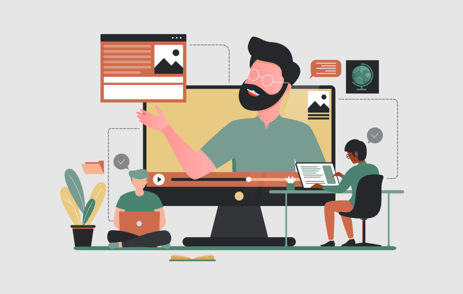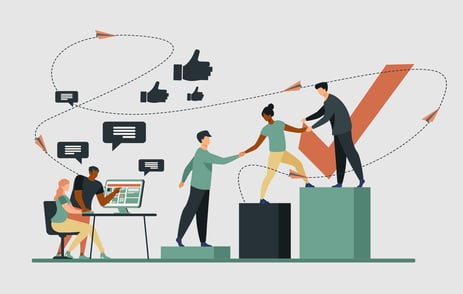By Sheri Jacobs, FASAE, CAE, President & CEO, Avenue M Group
Picture yourself on the precipice of a ski slope in Colorado. It’s the first run of the day, and the snow on the perfectly groomed hill beckons for you to start the run. The cool mountain air fills your lungs, and excitement courses through your veins. This moment, before you descend the hill, is a lot like the current state of AI and Machine Learning. Everything is about to change, and you can stop and take in the moment, recognizing that the next step you take will be the first of many that will be filled with uncertainty, excitement, and opportunity.
The moment we are in today is not unlike the one I faced in 2000. I left a job at the American Bar Association (ABA) to join a startup called SurePayroll. At that time, the Internet was in its infancy, primarily used for sending emails and engaging in chat rooms; it was not used for performing financial transactions, making major purchases, or sending highly confidential information. However, at SurePayroll, we recognized an opportunity—the power of the Internet to solve problems and increase efficiency. We saw that it could empower customers to save money while simplifying payroll management.
What set us (David) apart from established, well-funded companies (Goliaths) was that we were not constrained by an infrastructure that relied on a legacy system to deliver value to our customers. Our startup was built on the promise of solving a real problem with a solid business model. And it succeeded when many others failed. We disrupted the entire payroll industry and became the world’s largest online payroll company before Paychex acquired it. And we accomplished this because we could innovate, fail, and learn. We could take risks and were not so heavily invested in an infrastructure or business model that would compete with our offering. Our small startup succeeded because we solved an existing problem by leveraging the Internet.
The Call to Action: Disrupt or Be Disrupted. Clinging to an antiquated business model is a recipe for obsolescence. Yet many associations believe that changing what is working today is the riskier move.
The question arises: how can organizations disrupt their current business models and mitigate potential risks?
Step 1: Know the Problem You Are Solving
The first step in this journey is to deeply understand the problems your members or customers face in their work. When considering the integration of AI and Machine Learning, it's essential to start by identifying the specific pain points within your industry. For instance, in medical societies, member burnout and a lack of time for patient care are common
challenges. These professionals need easy access to reliable information at the point of care. Consider how your association could harness AI and Machine Learning to customize and deliver information to each member in a more accessible manner. By focusing on problem-solving, organizations can ensure their AI initiatives align with real-world needs.
Step 2: Create a Culture of Curiosity, Trust, and Trial
Building a culture that fosters innovation is paramount to success in this transformative journey. Organizations must create spaces where both traditional business lines and speculative ventures can coexist. When forming teams to explore new business ventures, ensuring that everyone involved is incentivized for their success is essential. Autonomy and trust are critical components of this culture. Make sure your team has the autonomy to make decisions while understanding the potential risks of their actions. This approach allows for cross-pollination of ideas and ensures that innovation thrives within the organization. Effective internal communication is also crucial to facilitate collaboration and maintain clarity in decision-making.
Step 3: Know What's Possible
Finally, organizations must clearly understand the possibilities offered by AI and Machine Learning and ensure the entire staff becomes knowledgeable so that the organization can explore new ways to provide value and remain relevant in the future.
Disrupt or be disrupted.
Tags:
Organizational Culture
October 31, 2023

